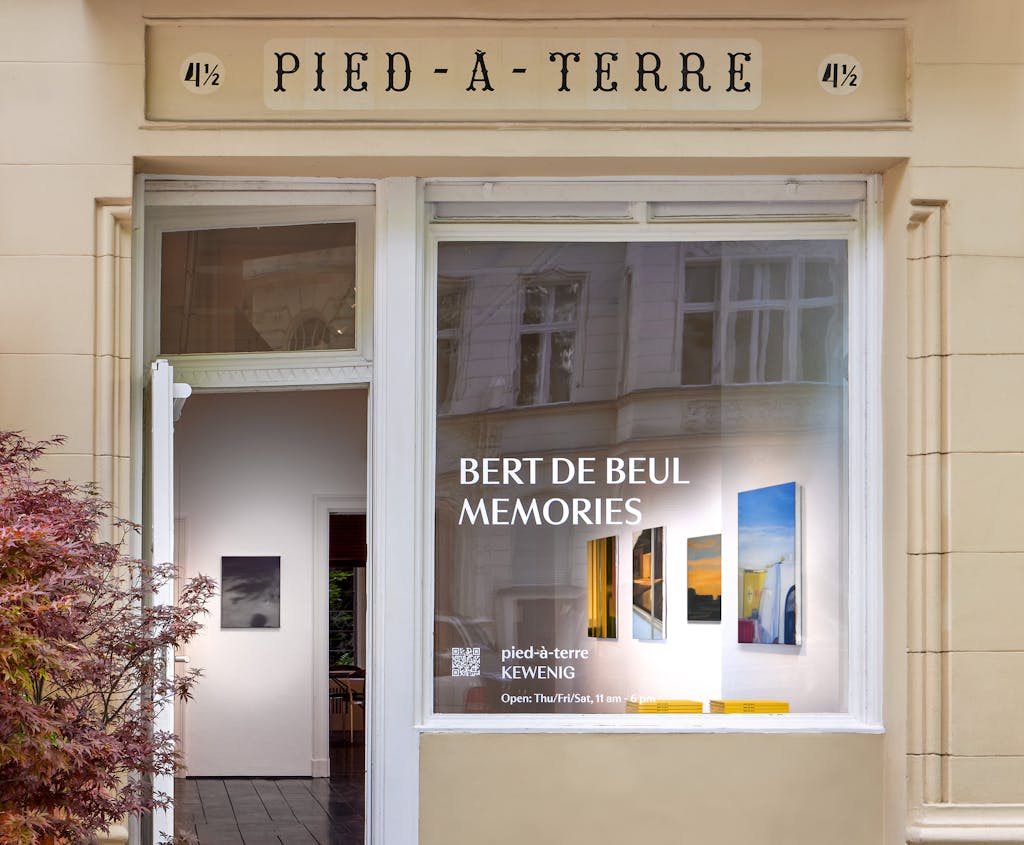The use of blurring techniques in wet oil paint is reminiscent of Gerhard Richter’s painting of the 1960s and 70s. Unlike Richter, however, De Beul manifests the expression of spontaneous impressions, of what is quickly and fleetingly seen and perhaps only subconsciously perceived. While everything that is faded out can appear unimportant and may not remain in memory, De Beul captures these ephemeral images in an emphasised blur, as if in a brief intermediate stage that precedes the fading.
To find his images, De Beul draws on pictures he has found in everyday life or photographed himself. The associations that these captured moments evoke are the driving force behind the creation of the paintings, while, conversely, they may have been decisive in the selection of the pre-existing motifs. De Beul’s stylistic means of reduction to a small section and distortion of the scale and perspective remove the object from the viewer’s focus.
It is also the artist’s subjective view of the smallest moment that does not allow any objective perception on the part of the viewer. The paintings are not intended to be representations of things, of the world or of stories, and certainly not depictions of reality. They are about the representation and the fleeting capturing of images. Any reference to time and space is lost. De Beul’s works are enigmatic because they promise a depth of content, although they lack anything that could be identified, that could tell a story, even if it is only about the beauty of an object.
This promise, as well as the masterful execution of the paintings, releases an astonishing power of attraction. Therefore, on the one hand, it is easy to immerse oneself mentally in the depicted subject and, with the help of one’s own visual experiences and associations, to engage in a dialogue with each of the works. On the other hand, this is a challenging task. After all, each individually viewed image is already overlaid and interwoven with other images consumed from a large number of media.
Since the 1990s, Belgian painters, such as Luc Tuymans and Michaël Borremans, have been working in very different ways to create their own critical pictorial world in the face of a ubiquitous stock of images. With his strategy of manipulating the images, however, De Beul's work represents an extraordinary position that favours the atmospheric element.
With the help of the distance created by the painterly concealment and simultaneously empirical accessibility, De Beul draws the viewer into an interplay of recognisability and alienation and offers a dissociation of reality that leads to reflection on the meaning of the remembered and unremembered images.
